1966 Cadillac Coupe DeVille: Gorgeous in Gold!

Today’s question for all of you fine folks: What year was Peak Cadillac? What was the best possible year for the highest quality, most beautiful, most powerful version of GM’s storied top-of-the-line marque? Depending on the day, I might say 1962, 1968, or 1970. But today, I’m making the case for 1966. That year, Cadillacs—from most basic Calais to the top-of-the-line Fleetwood Brougham and Eldorado convertible—were swank, classy, and elegant. Any country club, fine hotel, or upper-tier department store would have been happy to have one parked right in front of their establishment.

Perhaps my affection for 1966 Cadillacs was reinforced because around the time I saw this most excellent example, I had recently gone out to the local theater and saw Once Upon a Time in Hollywood. I highly enjoyed it. Naturally, all the car spotting was a substantial part of my pleasure, and the “hero car,” driven by Brad Pitt through much of the movie, was a 1966 Cadillac Coupe de Ville.

Through pure good luck, or just decent odds due to all the car shows I attend, I saw a most excellent ’66 Coupe de Ville a mere week prior to screening the film. I’ve always loved Cadillacs, Lincolns, and Imperials. And although I drive Lincolns, I equally love seeing Cadillacs, especially the classic 1960s models.

There I was, wandering around with my Uncle Dave at the monthly cruise-in held by the local Classy Chassy (yes, that’s how they spell it) Car Club at Coral Ridge Mall in Coralville, Iowa. I’d just finished checking out a very nice 1972 Pontiac LeMans coupe when it appeared out of the ether—or just one of the mall entrances.

“Holy cow! That’s a nice ’66!” I stammered, hurriedly abandoning my uncle and my cousin Sara’s husband to chase after the Caddy. Yes, cars like this have that effect on me.
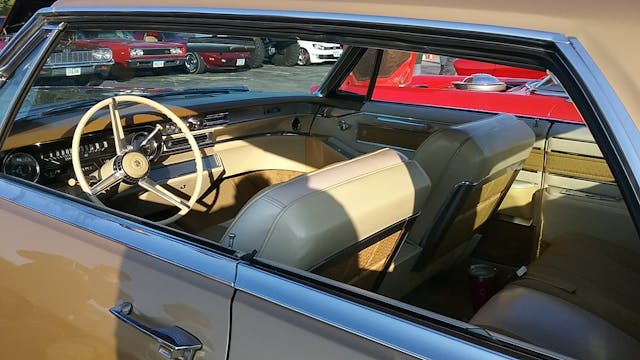
Ever notice the preponderance of red muscle cars, pony cars, and hot rods? I see so many. And I’m sure their owners love them, enjoy them, and never regret for one second getting them. But oh, how I love the offbeat stuff. I’ll march past a row of Mustangs and Camaros to gawk at an AMC Pacer Limited wagon, a 1977 Malibu Classic, or a 1979 Bonneville.
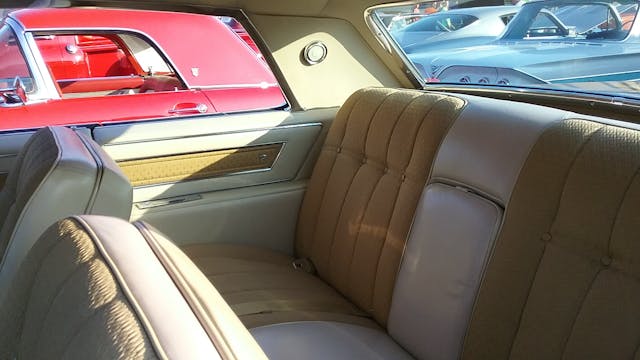
Stuff that was once commonplace in 1968 or 1978 or 1991 is now rare, unusual, and interesting. And if it’s a Chris-Craft-sized road vessel from the good ol’ United States, forget everything else, I’m checking it out immediately!

Now, where was I? Oh, yes. The cover of the 1966 Cadillac showroom brochure had the tagline “New elegance … new excellence … new excitement.” And so it was.

Cadillac had been all-new in 1965, so the 1966 models were not drastically different. But to my eye, all the minor details and refinements made for an even more beautiful car.

The ’66s were introduced on October 14, 1965. Color-keyed bezels replaced all-chrome units, there was a new grille and parking lamps, plus a revised tail treatment as well. New wheel covers, new colors and upholsteries, and even more refined trim and details rounded out all that was new this year. Heated seats and vario-ratio power steering appeared for the first time.

Series 683, better known as the de Ville series, was offered in four body styles: The Sedan de Ville, Hardtop Sedan de Ville, convertible, and the unforgettable Coupe de Ville. Really, is there a better car name than Coupe de Ville? Well, Imperial and Continental are contenders too, but I love the name of Cadillac’s luxury two-door hardtop.
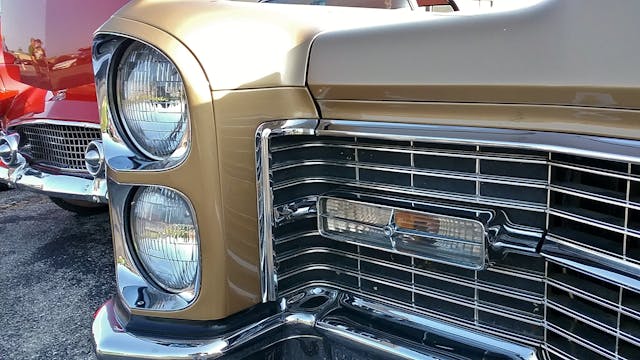
The 1966 Coupe de Ville, model #66-683, weighed in at a princely 4460 pounds and had a base price of $5339 ($49,738 today). A total of 50,580 were built for the year. This was no small amount. But when you bought a Cadillac, you GOT a Cadillac, and all that the name implied: Comfort, prestige, class, and luxury, naturally.

For comparison’s sake, that same year you could have picked up a new 1966 Chevrolet Caprice two-door hardtop for $3000 ($27,948) or a Buick Electra 225 Custom two-door hardtop for $4211 ($39,229). But in 1966, Cadillac was king of the domestic luxury cars.
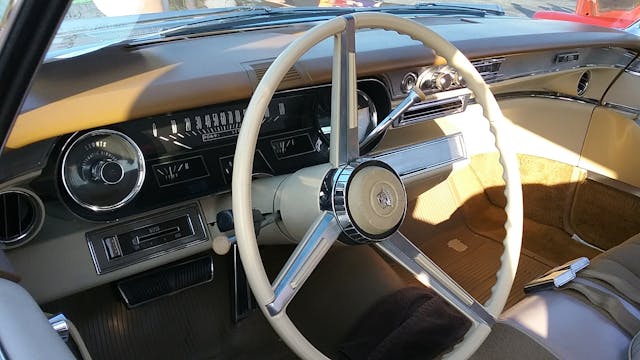
Sure, the Continental and Imperial were equally nice, luxurious conveyances, but Cadillac stood head and shoulders above them when it came to total sales. When you had a Cadillac, in 1966 America, you truly had arrived.

The Coupe de Ville, like all Cadillacs, was powered by a V-8. In 1966, it was a 429-cubic-inch bent eight with overhead valves and 4.13 x 4.0 bore and stroke, producing 340 horsepower at 4600 rpm. Breathing was accomplished via a Carter Model 3903S four-barrel carburetor.

It was backed up by the creamy smooth Turbo Hydra-Matic automatic transmission, with torque converter and a variable stator—though Seventy-Fives didn’t get that last feature, according to my 1966 brochure. Other major standard equipment on all Cadillacs included power brakes, power steering, and a heater/defroster. Automatic level control was standard on Eldorado, Sixty Special, Brougham, and all Seventy-Five models.

And you will be relieved to know all 1966 Cadillacs came with whitewall tires as standard equipment. Even the spare tire was a whitewall—a nice touch of class.

Coupe de Villes, naturally, were truly full-sized automobiles. Wheelbase was 129.5 inches, and overall length was an impressive 224.2 inches. With the sleek, squared-off styling that all 1966 Cadillacs displayed, they looked even longer than they actually were.

And of course, even if you bought a totally standard, zero-option Coupe de Ville, you still had a marvelous conveyance. If you wanted more (and many did—after all, it’s a Cadillac!), many optional extras were available if your wallet could handle it. For those folks of a certain age, some of these options may seem odd, considering you can get a 2019 Fusion or Malibu with them fitted as standard, but it was a different time.

How so? Well, here’s just a sampling of 1966 Cadillac factory options. Air conditioning was a substantial $624, or more than 10 percent of the base price of a 1966 Coupe de Ville. Other popular options included cruise control for $97, tinted glass for $52, leather trim for $151, and an AM/FM radio for $191. The previously-mentioned heated front seat retailed for $60.20, and bucket seats with center console (with mandatory leather trim) were $188.

But for those folks splurging on a brand new Cadillac, such finery was expected, and buyers happily added whatever they wanted. And they drove out of the dealership happy, with zero regrets.

Our featured car was resplendent in Antique Gold, with cloth and leather interior trim in gold and white. It was a stunning example. As gorgeous in 2019 as it must have been sitting in the showroom in Autumn of 1965. As Cadillac advertising 20 years later often said, “Best of all … it’s a Cadillac.” And was 1966 Peak Cadillac? Perhaps. It’s certainly a contender!
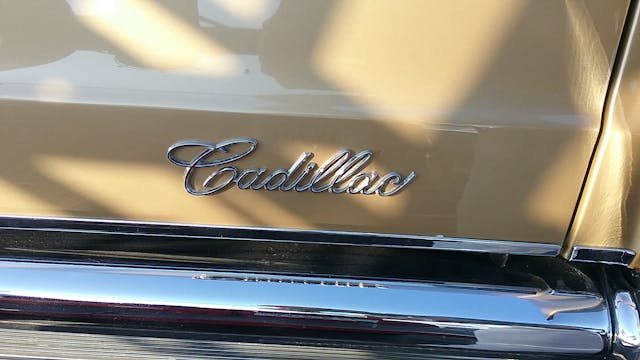
***
Check out the Hagerty Media homepage so you don’t miss a single story, or better yet, bookmark it. To get our best stories delivered right to your inbox, subscribe to our newsletters.
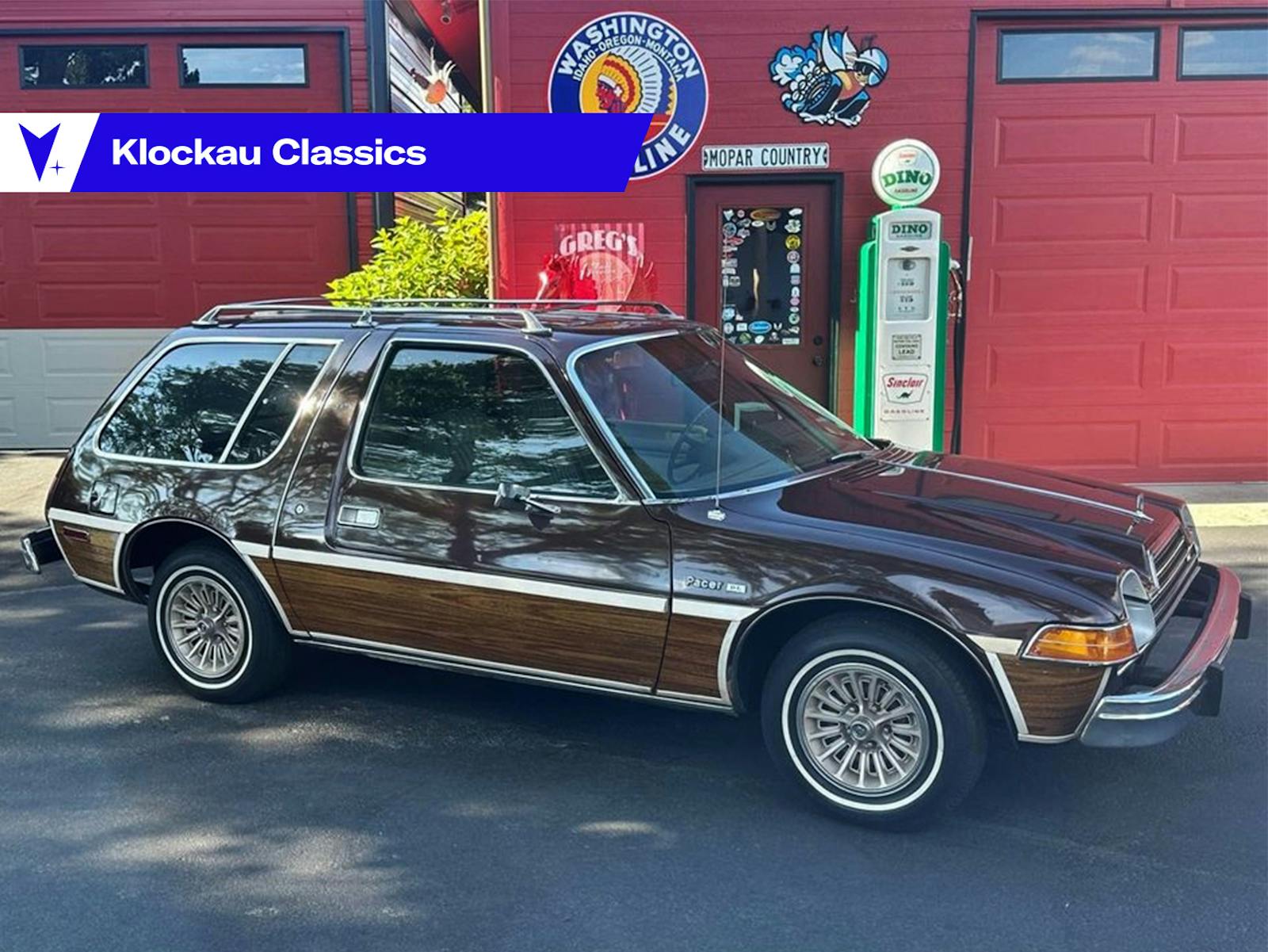
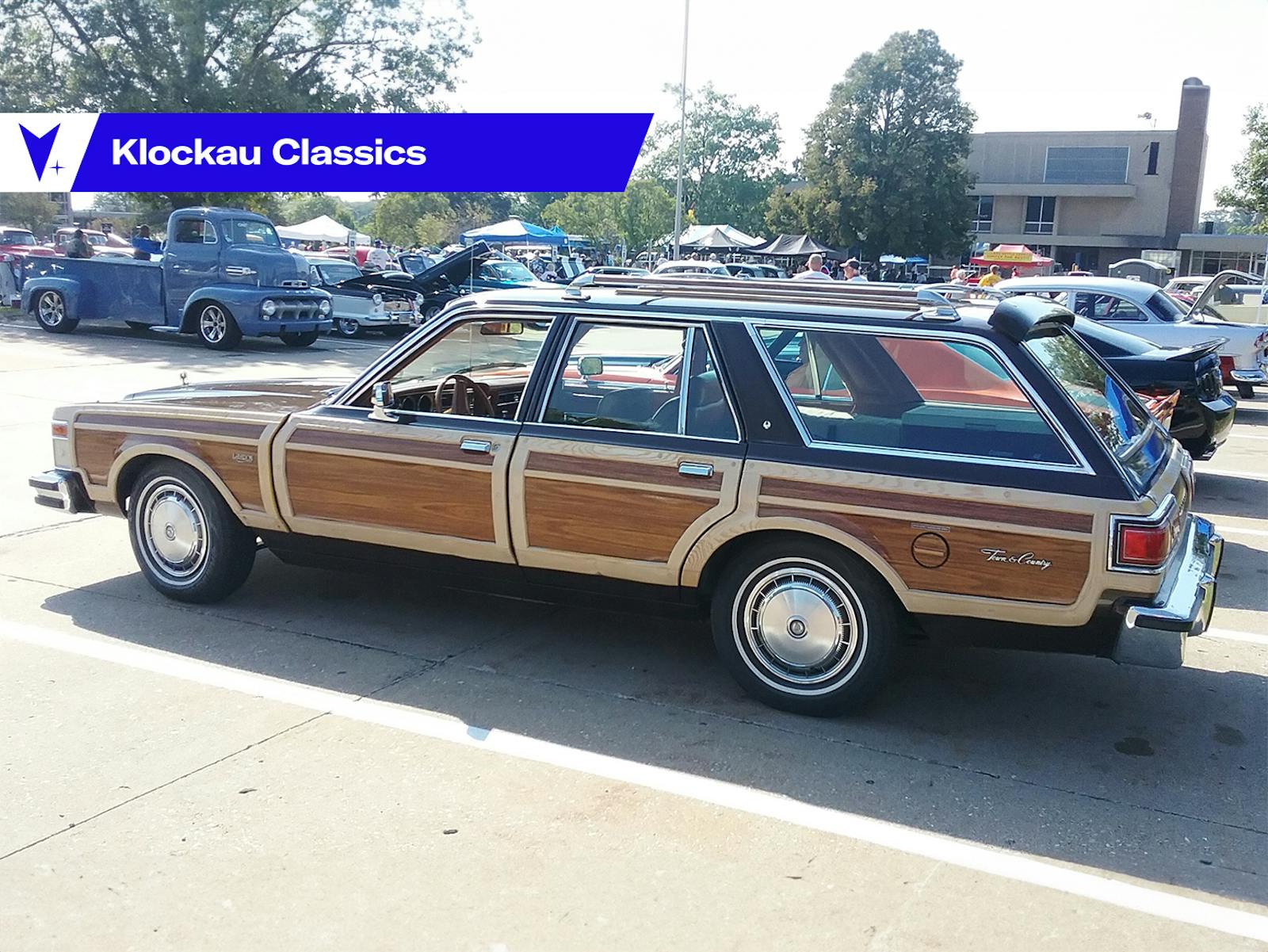
Good Day to all in the comments, can anyone inform me on where to find photos of the interior option on a ‘66 CDV that had the oversized emblem stitched into the 4 backrests?